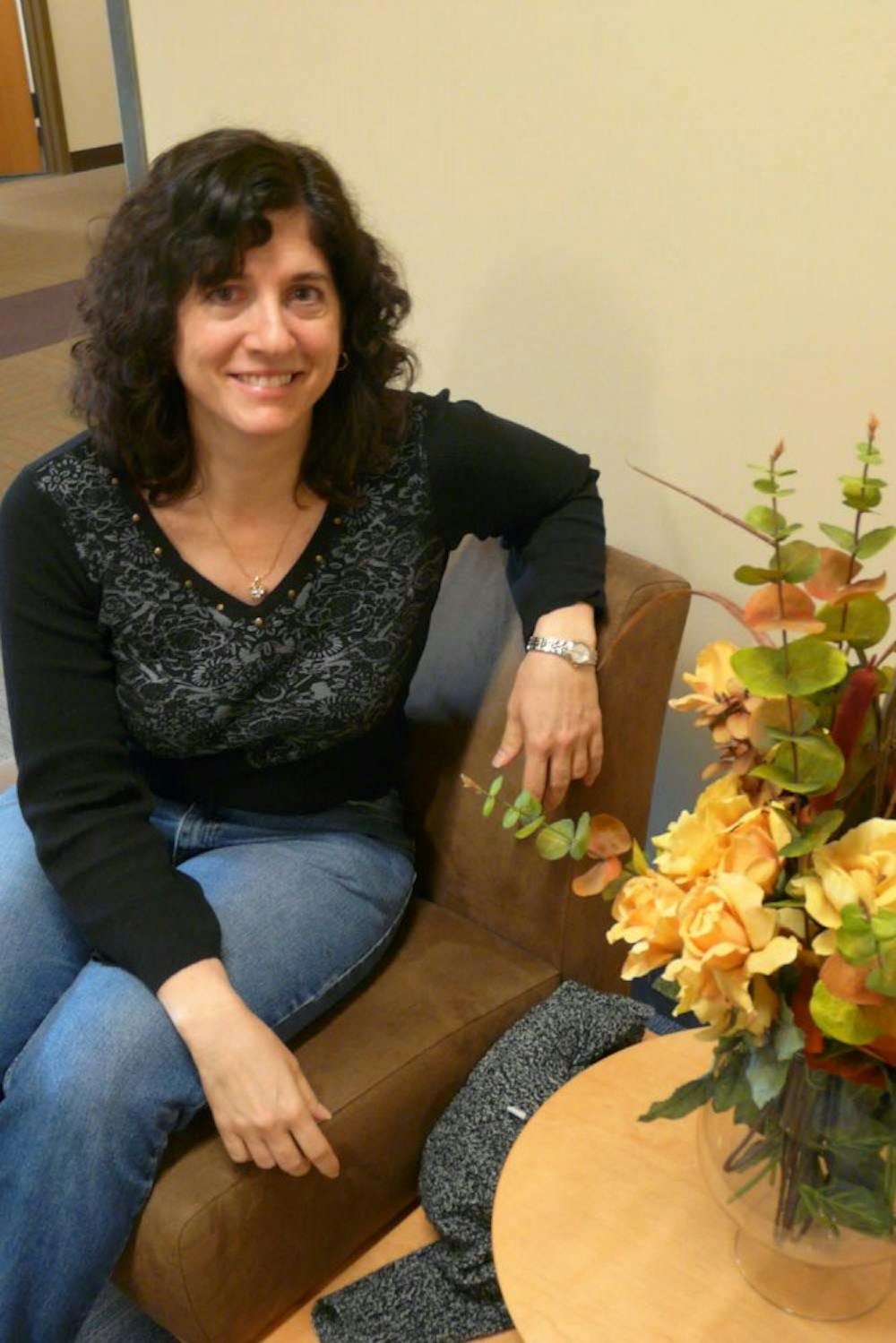Engineering professor is creating a sensor that will assess the effectiveness of spinal implants
(Alissa White -- The Beacon)
By Luke Riela, Staff Writer -- Riela14@up.edu
Someone with a spinal implant doesn't have an effective way of knowing how well it is working, if it is working at all.
Deborah Schenberger, assistant professor of engineering, is working on a sensor that will eliminate this problem.
"The way I have developed (the sensor) shows a lot of promise," Schenberger said.
The microscopic sensor built onto the spinal implants measures the implant's effectiveness by assessing how much tissue has fused with it. The fusion should relieve the implant of some physical strain, and eventually take all the pressure off, according to Schenberger.
"Initially, all of the load will be carried by the hardware, then bone will start to develop," she said.
This information is important if the implant isn't functioning properly, according to Schenberger.
X-ray machines are useful in seeing the implant itself, but not the forming bone tissue.
"It's really hard to see soft tissues with X-ray," Schenberger said. "You don't want to see the metal hardware – you want to see the bony hardware."
Schenberger's research is being sponsored by K2M Inc., one of the major orthopedic spine companies, and the sensor is a few months away from being a patented design.
"We filed (for the patents) in 2004," Schenberger said. "This particular field is so full of patents that it takes a bit longer."
According to Schenberger, other sensors have been made in the past but are flawed.
"There are other ways to do the sensing, but they have drawbacks," Schenberger said.
One of the issues with the sensors is a high sensitivity to temperature.
"Even a fever would throw off your reading," Schenberger said.
Another problem is the sensors' high power requirements.
"You're going to have batteries that need to be recharged, and that just doesn't work," Schenberger said.
She has been working on the sensor since 2002, when she studied for her doctorate in biological systems engineering at The University of California, Davis.
"It's my graduate research, and it's my current research," Schenberger said.
Schenberger has collaborated with Monish Gupta, the chief spine surgeon at UC Davis and one of Schenberger's dissertation research advisers, since beginning research on the sensor.
"We filed for the patents together, we talk on the phone every couple months and he has helped with the sheep studies," Schenberger said.
The tests carried out on sheep have helped them understand how the sensor works.
"We're trying to correlate the sensor reading with the amount of fusion that has occurred," Schenberger said.
Next year, a number of UP students will help with the sensors as part of their senior projects.
"I have a cross-disciplinary engineering group that wants to take this on as a project," she said. "I enjoy working with the students."
One of these students, junior Sacha Hall, sees the project as a rare opportunity.
"I want to get a foot in the door to becoming a biomedical engineer," she said. "It's one of the only chances you can get for hands-on experience in this field."
Junior Mindy King is also looking forward to doing the biomedical project.
"It's something that pertains to what I'm actually studying," King said.
Despite the help, Schenberger predicted she is still a few years away from the finished product.
"We have a lot of animal testing and stuff that has to be done first," she said.
The technicalities on how the sensor will relay the information also still need to be figured out.
"The doctor will have some sort of handheld device," Schenberger said, mentioning that the device would probably display a graph of the strain on the implant. Before coming to UP three years ago, Schenberger worked in the orthopedic industry.
"Most of my experience is industrial, not academic," she said.
Schenberger feels as if her work experience in orthopedics has aided in both her research and teaching.
"It not only helps with research, but makes me a better teacher as well," Schenberger said. "The more you can relate to something practical, the more they can learn."








